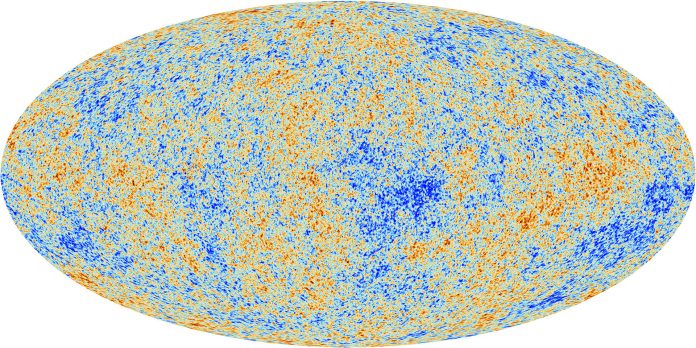
Prof. Nicola Vittorio from Università degli Studi di Roma ‘Tor Vergata’ gives an absorbing insight into CMB Space missions and why they are a window to astroparticle physics
I put stress1 on the great goal of modern cosmology: investigating the physics of the early universe. This very ambitious goal requires combined and synergic contributions from astronomy, particle physics and cosmology. These three research areas are progressively converging into a relatively new research field called astroparticle physics, which simultaneously addresses fundamental questions connected from one hand with the elementary particles and their interactions but, on the other hand, with the formation and evolution of the large-scale structure of the universe.
In 2001, the Astroparticle Physics European Consortium (APPEC) was founded to promote cooperation among the members of the European scientific community and coordination among the national (European) scientific agencies. This was (and is) perfectly in line with the need and the effort to build a European Research Area (ERA), as clearly stated in 2011 by the European Council. This is obviously crucial to fully capitalise on Europe’s scientific and creative potential.
An ERA Roadmap at EU level was endorsed by the Council in 2015, calling for a limited number of top action priorities. Although transnational cooperation between the Member States has increased along with an improvement of all the indicators for research excellence, there is still much to do. This is why it has been particular timing the presentation of the European Astroparticle Physics Strategy by APPEC the 9th January 2018, in Brussels, Belgium.
The APPEC Recommendations for the 2017-26 address specific scientific issues and updates of long-term scientific strategies, as well as societal issues like global collaboration, community building, gender balance, education, public outreach and relations with industry. Among these recommendations, there is the recognition that: “The future Cosmic Microwave Background (CMB) programme sets the stage for a range of opportunities to link key themes together and provides a potential stepping-stone towards further fundamental discoveries”.
Interestingly enough, the properties of the galaxies and their spatial distribution, as observed “here and now”, are determined by the physics of the inflation, a period of accelerated expansion occurring in the early Universe just (10-36 seconds) after the conjectured Big Bang. Inflation is nowadays considered the paradigm solving some fundamental shortcomings of the hot Big Bang model and, most of all, providing the only self- consistent mechanism able to explain the generation of the primordial seeds out of which (via gravitational instability) all the observed cosmic structures have formed.
The CMB is certainly the most powerful and natural tool to characterise these seeds and to constrain models of particle physics beyond the standard model at energies which will be never reached in laboratory experiments. In particular, tensor perturbations of the space-time metric lead to a primordial gravitational wave background, which imprints a unique pattern (the so-called B-modes) in the polarisation of CMB photons. Therefore, the primary scientific exploitation of CMB B-mode detection will aim to a definitive probe of the inflation paradigm and, hopefully, to elucidate the physical mechanisms behind it.
In addition to this, the gravitational lensing of CMB photons due to the large-scale matter distribution will provide stringent information on the distribution of dark matter and, possibly, on the masses of neutrinos. The comparison between the neutrino properties inferred from cosmological measurements and those determined in laboratory experiments is likely to open a new window on our physical modelling of the micro- and macro-cosmos.
To discover the secrets hidden in the B-modes of the CMB, it is necessary to combine observations from space and from the ground. The ongoing and forthcoming ground-based CMB experiments2 use large detector arrays and reach high angular resolution. Space-borne CMB measurements are not limited by the atmosphere and can probe a wide frequency range to provide an effective foreground subtraction to reveal the truly primordial B-modes induced by the primordial gravitational wave background.
The last space experiment dedicated to CMB observations is the ESA/Planck mission, which has created a CMB community in Europe with a unique expertise in space-borne CMB research. After the completion of Planck and the forthcoming Planck Legacy release, European CMB researchers have continued to play leadership roles in a number of suborbital efforts – both in Europe (e.g., Qubic, LSPE, Pilot) and elsewhere (e.g., by collaborating with the ground-based S4 program) – but still looking for a shared, major European experimental effort.
The European CMB community has also recognised the need and the urgency for a new space mission. There was quite a strong R&D effort in Europe in new technologies for the next generation CMB experiments and a proposal for a Core mission submitted to ESA has been, unfortunately, rejected. Therefore, LiteBIRD (Lite satellite for the studies of B-mode polarisation and Inflation from cosmic background Radiation Detection) – a JAXA’s strategic large mission candidate in Phase-A1 (concept development) – appeared to the European CMB community a natural and logical continuation of these Europe-led efforts.
At the national level, there is an interest to contribute to LiteBIRD from CNES in France, from both the UK Space Agency (UKSA) and the UK Science and Technology Facilities Council (STFC) and from the German Aerospace Center (DLR). The Italian Space Agency (ASI) has already founded the participation of the Italian CMB community to the LiteBIRD Phase A1 study, which will end by the end of this year.
Further interest at the European level has been manifested by Spain, the Netherlands and Finland, along with Sweden. To facilitate a coordinated effort of the European community during the Phase A1 of the LiteBIRD experiment, there is the willingness to constitute a European Consortium. The governance structure of this Consortium will be finalised during the forthcoming Turin Meeting (8th-9th February 2018). This structure will be revised once the LiteBIRD mission will be approved and the so-called Phase B will start, early in 2019.
The participation of the European CMB community in LiteBIRD was solicited by a formal letter of the ISAS/JAXA Director-General. A potential junior partnership of ESA on the JAXA-led mission LiteBIRD could be realised through a Mission of Opportunity (MoO), if there is a clear scientific return to ESA’s scientific community. However, ESA cannot approve a MoO before LiteBIRD is formally selected by JAXA.
So, while there is the need of not dispersing knowledge and skills acquired with the ESA/Planck mission, the formal selection from JAXA of the LiteBIRD mission seems to be the appointment not to be missed by the CMB European community.
See the link to my last book here, which was published in late 2017.
1 Open Access Government May 2017, pp 102-103
2 Open Access Government August 2017, pp. 182-183
Please note: this is a commercial profile
Prof. Nicola Vittorio
Università degli Studi di Roma ‘Tor Vergata’
Tel: +39 (06)72 594 581
http://www.nicolavittorio.eu/en










